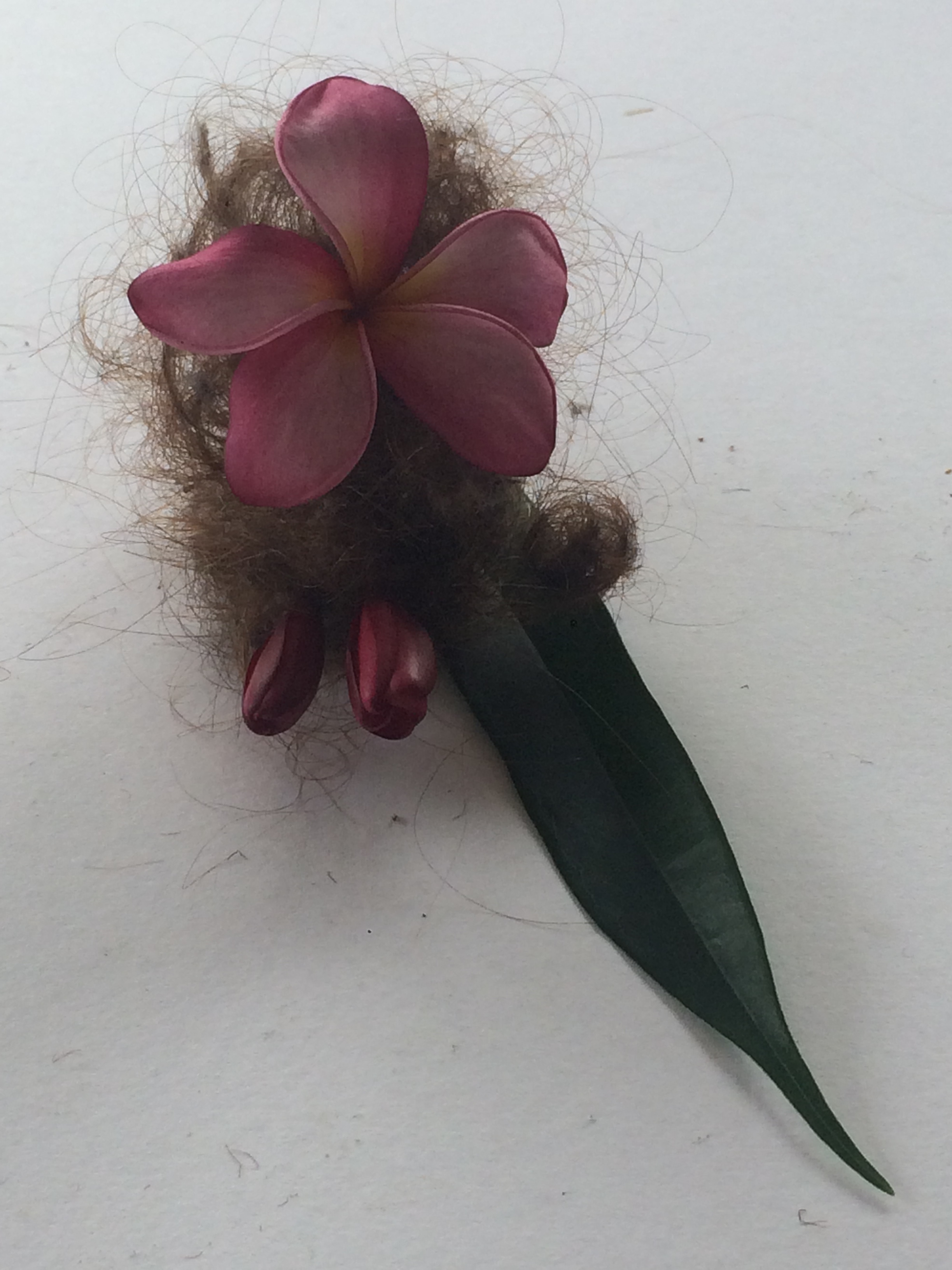I have spent the last two weeks in Lagos, Nigeria, researching the politics of hair and Identity and made some compositions with improvised notes of found hair & dust and fresh flowers.
Before we say a word to a stranger or a new acquaintance our visible hair ‘speaks’, telling our gender, health, religion, profession or politics. Like other mediums, the language of hair, with its codes and symbols has a transformative power: by restyling it, we create new narratives and stories for the shared experience which is culture. Hair shows the human desire to not be subjected by reality by reconnecting and modifying the dialogue between nature and material culture.
Hair is understood to have qualities that relate to the ‘life’ or potency of its owner. Similarly hair colours carry meanings which are often stereotyped. Specifically, I am interested in the de-coding of red hair.
Red hair perceived idea is tinged by rarity, age and gender. My Identity has always been cast under the red hair lens. My father has raven black hair and so do my mother and brother. I was the only one born with copper red hair. I longed to conform but my hair made it impossible. I suppose a lack of self correspondence has always marked my Identity.
The redhead stereotype seems to split and travel along the line of time and gender. As a child because of my hair i was evil, an unruly rare creature associated with wicked witches and mermaids. However as I got older it soon morphed me into a highly sexualised, fiery, hot tempered, strongly scented being. It is against these stereotype that a creative process started and I began my artistic research into Hair coding within Identity formulation and how to progress its language. Redheads are not considered equal. When we say redhead we invariably mean a woman, if it is a man the language changes to ‘he’s got red hair’ or ‘the guy with red hair’ and the same switch to object of desire doesn’t seem to happen to red hair men. And here is the second traditional stereotype i am trying to unknot.
Hair is an incisive medium and so its use in art isn’t new. Hair produce and convey a corporal synthesis of our biological, political and personal bodies into the inescapable social fabric, governed by relation of power, resistance or conformity. Hair is a biological space and cultural site for resistance and change.
Art continues to reflect the evolution of Hair for its language represents a strong legacy to past ancestors, together with the shifts of the sociopolitical context in which it operates to redefine and restyle the future.
Where do we come from? Where does the social body crosses the private body?
Where is the relational nature of difference?





